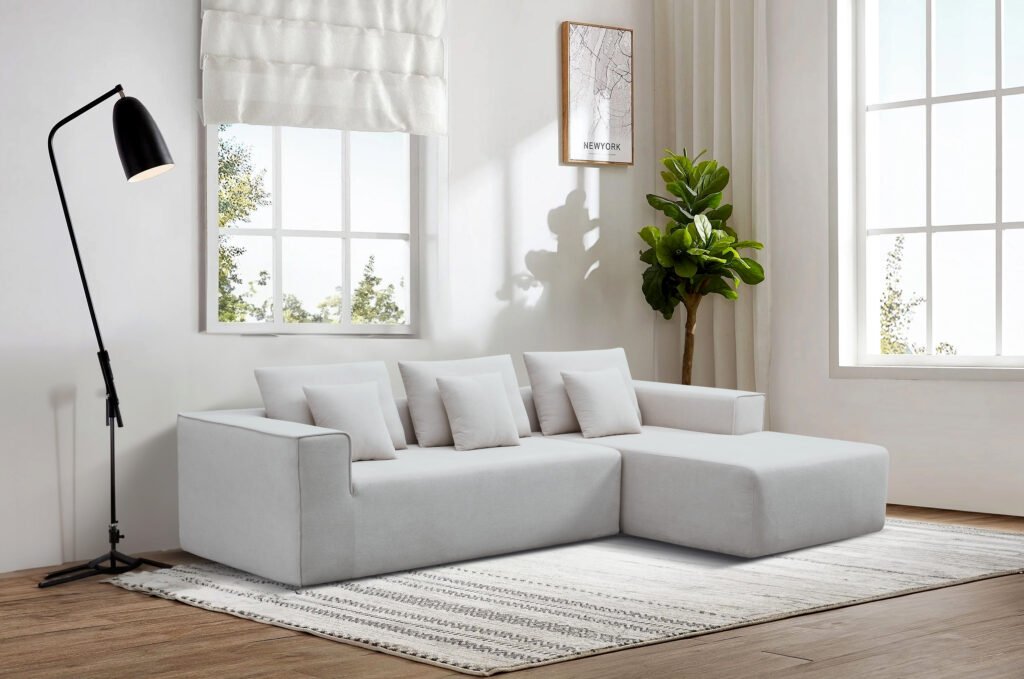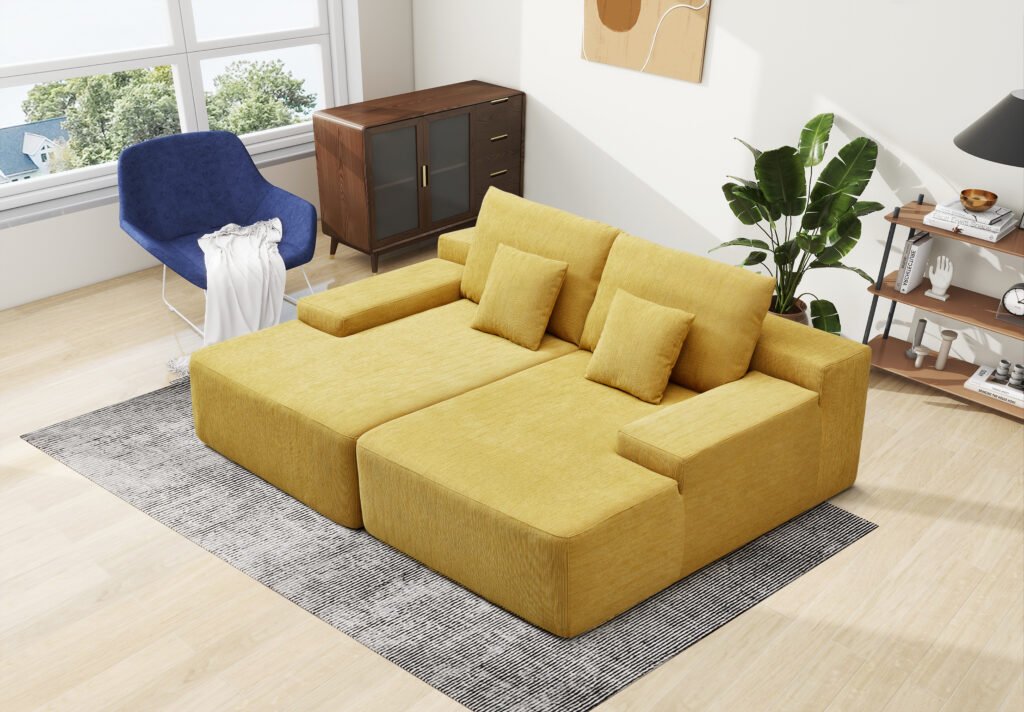For B2B companies in furniture manufacturing, wholesale, and retail, understanding the various frame structures used in compress sofas is crucial for product development, quality assurance, and customer satisfaction. The frame is the backbone of any sofa, directly impacting durability, comfort, safety, and cost-efficiency. This article expands on common industry knowledge by detailing the main types of frame structures in compress sofas, their materials, benefits, and considerations for business buyers.
Why Frame Structure Matters in Compress Sofas
The frame structure determines the sofa’s strength, longevity, and ability to withstand compression packaging and shipping processes. Compress sofas are vacuum-packed to reduce volume, so their frames must be resilient enough to endure compression without damage, yet flexible enough to regain shape upon unpacking.
For B2B buyers such as furniture wholesalers, retailers, and hospitality suppliers, selecting the right frame structure ensures:
- Reduced product returns due to structural failures
- Enhanced customer satisfaction with durable, comfortable sofas
- Compliance with safety and quality standards
- Optimization of production costs and supply chain efficiency


Main Types of Frame Structures in Compress Sofas
1. Solid Hardwood Frames
Description: Solid hardwood frames are constructed from dense woods like oak, maple, or beech. These frames are crafted with mortise-and-tenon joints or reinforced screws for maximum stability.
Benefits:
- Exceptional strength and durability
- Resistance to warping and sagging under compression
- Long lifespan, suitable for high-end compress sofas
B2B Considerations: Hardwood frames increase production costs but justify premium pricing. Ideal for businesses targeting luxury markets or commercial clients requiring robust furniture.
2. Engineered Wood Frames
Description: Engineered wood frames use plywood or laminated wood composites. These materials combine wood veneers with adhesives, offering a balance between strength and cost.
Benefits:
- Cost-effective alternative to solid wood
- Good resistance to compression and deformation
- Lighter weight, reducing shipping costs
B2B Considerations: Engineered wood frames are popular among mid-range compress sofa manufacturers. They offer scalability for mass production while maintaining acceptable durability.


3. Metal Frames
Description: Metal frames, typically made from steel or aluminum, provide a modern alternative to wood. They are often tubular or flat bars welded into shape.
Benefits:
- High strength-to-weight ratio
- Excellent resistance to compression and impact
- Allows innovative designs with slimmer profiles
B2B Considerations: Metal frames suit businesses focusing on contemporary styles or commercial settings needing fire-resistant and easy-to-clean furniture. However, metal frames may increase manufacturing complexity and cost.
4. Hybrid Frames (Wood-Metal Combinations)
Description: Hybrid frames combine wood and metal elements to leverage the strengths of both materials. For example, a hardwood base with metal reinforcements in stress points.
Benefits:
- Enhanced durability and flexibility
- Optimized weight and cost balance
- Design versatility
B2B Considerations: Hybrid frames appeal to manufacturers aiming for mid-to-high-end markets, offering differentiated products with superior performance.
Additional Frame Structure Features in Compress Sofas
- Corner Blocks and Reinforcements: Many compress sofas include corner blocks glued and screwed at frame joints to improve rigidity and prevent loosening during compression and use.
- Webbing and Springs Integration: Frames often incorporate elastic webbing or sinuous springs attached to the frame to enhance comfort and support.
- Protective Coatings: Frames may be treated with anti-moisture or anti-termite coatings, important for durability in various climates and commercial environments.
B2B Insights: Selecting the Right Frame Structure
- Target Market and Usage: For hospitality or commercial clients, prioritize durability and compliance with fire safety standards, favoring hardwood or metal frames.
- Cost vs Quality Balance: Engineered wood frames offer cost savings for volume production, while solid wood or hybrid frames suit premium product lines.
- Supply Chain and Manufacturing: Consider frame materials that align with your manufacturing capabilities and supplier availability to ensure consistent quality and delivery.
- Sustainability: Increasingly, B2B buyers seek frames made from sustainably sourced wood or recyclable metals to meet environmental standards and customer expectations.


Conclusion
Understanding the different frame structures in compress sofas is vital for B2B companies aiming to deliver durable, comfortable, and market-competitive products. Solid hardwood, engineered wood, metal, and hybrid frames each offer unique advantages tailored to various business needs and customer segments. By carefully selecting and optimizing frame structures, manufacturers, wholesalers, and retailers can enhance product quality, reduce costs, and strengthen their position in the competitive furniture industry.